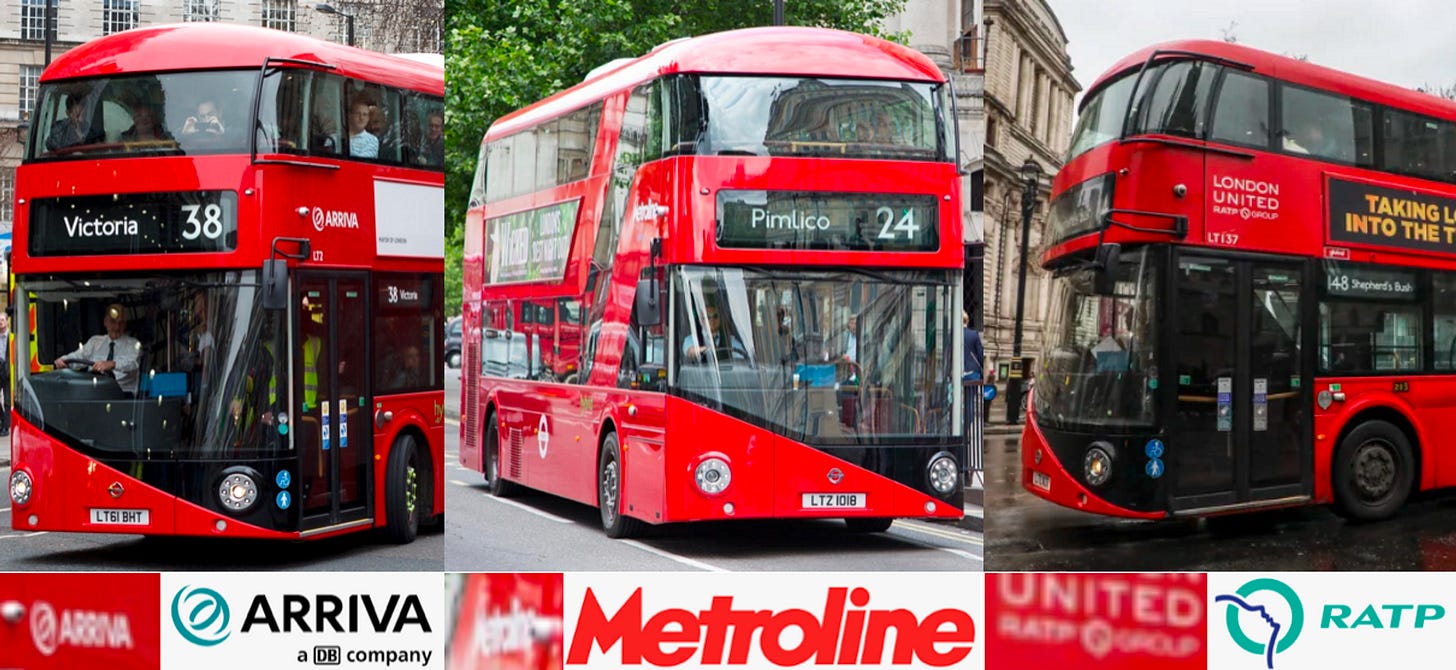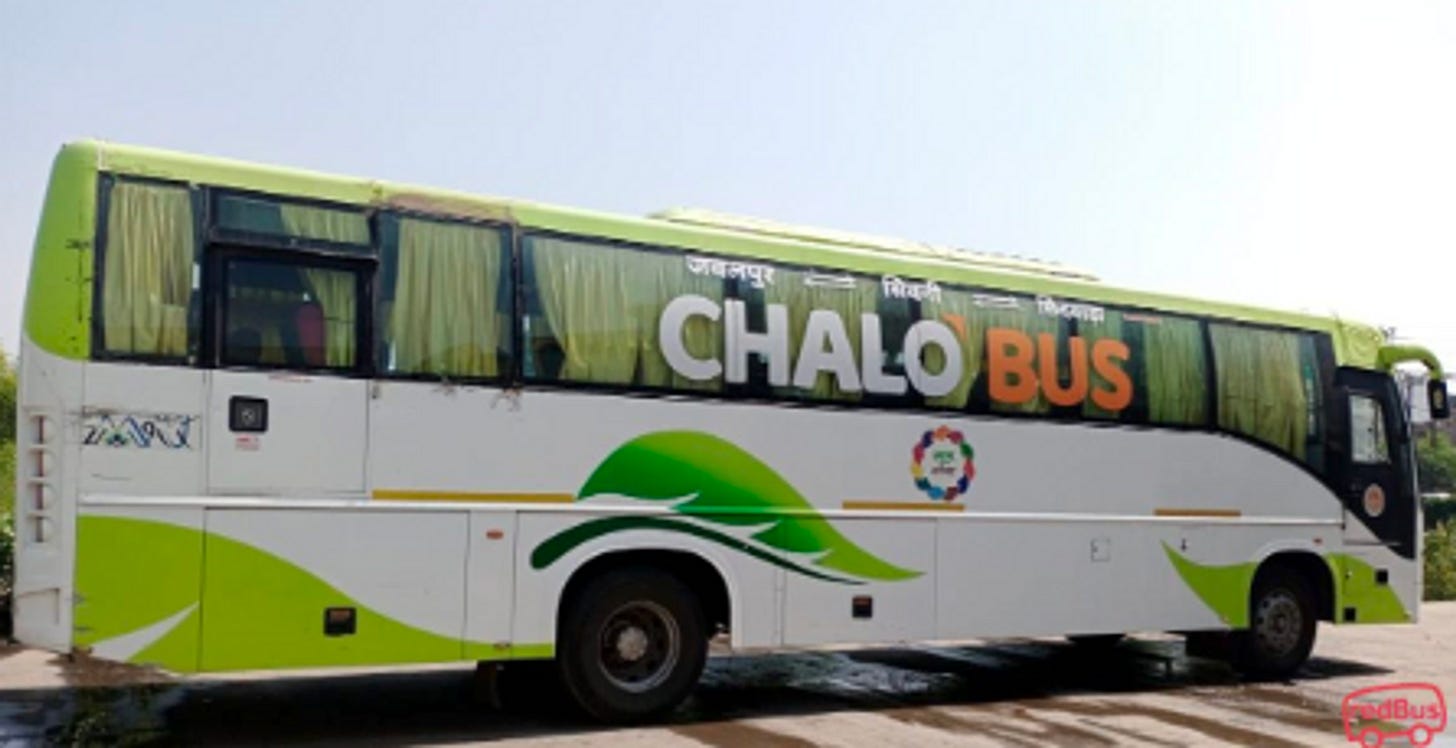🔮 The future of private transit startups
The fundamental tension between public transit networks and innovation
This newsletter offers deep takes on the intersections between mobility and technology. You can subscribe here:
There’s been a lot of startup news in the transit van / commuter shuttle world. Egyptian-Emirati leader SWVL has fared better than most and recently acquired Mexican leader Urbvan for $82M (link). Pakistani breakout Airlift - which was a sort of hero of the entire country’s startup scene - folded after raising a $85m round only a few months ago (link). COVID has been the biggest problem for all of these players since commutes were their bread & butter. For the startups who have ridden that wave, there’s another existential challenge coming their way.
All this might seem like déjà vu to San Franciscans who were riding Chariot vans back in 2017, but for those who weren’t, here’s the need-to-know on why shared van startups are going to face a lot of hurdles in the next five years - and how they might overcome.
“Private” transit?
First, what defines this category? The lines blur, but most started offering corporate shuttle service and branched out into offering a broader shared vanpool network that quickly begins to look like a private transit network.
It’s no wonder that as COVID reduced commutes, these companies flung themselves into all sorts of adjacencies. Airlift picked up quick commerce, while Urbvan began running inter-city routes.
Most of the two dozen or so shared van startups around the world - including the leader SWVL - are in megacities in emerging markets. They serve the growing middle class whose households might not afford a car or want to deal with crushing traffic, need to commute across congested cities to office parks, and aspire to nicer conditions and service speeds than are available via public transit - if that transit service is available at all.
And that’s the core arbitrage. People and the companies they work for want to get around and aren’t finding adequate ways to do so. Where government investment in transport options has not kept pace with the growth of the city, that’s where these companies step in.
Conflicts between private & public
But startups serve routes whose riders can pay to make them profitable. Those might be routes already served by public transit, and this is where conflicts frequently first arise between startup and city. The startups offer a premium service to the wealthier commuters (often subsidized by their employers) who want either a nicer experience or a faster ride with fewer stops. Stripping out the few consumers who actually pay for transit hurts the public network’s financial viability.
Transport networks are networks, and the more universally they serve places, the better their service quality and economic model becomes. There are a variety of parallels one can make: consider how standard air carriers couldn’t fly you transcon for $120 without business class seats paying $3,000, or how health insurance risk pools can’t operate if young healthy people pack up and leave.
Chariot, a shared van startup which ran in San Francisco from 2014-2018, faced serious pushback from government throughout its life. SFMTA prides itself on capturing the second highest rate of commuters in public transit in the entire US - San Francisco’s goal was very much to grow its public network universality and, along with that, the relative service quality and economic health of the SFMTA. So as Chariot began to grow, SF reviewed resolutions that would, for example, outlaw Chariot from running routes that overlapped too much with public bus routes. Chariot plodded along and eventually Ford, its acquirer, shut it down about a year before the pandemic would have given them a great face-saving cover story.
Megacities in emerging markets might lack state capacity to adequately serve transport needs. And as long as there’s not a realistic hope for an adequate public network to exist, there’s less basis for governments to legitimately obstruct the growth of profitable private networks.
But the day the state decides it will grow public networks, the conflicts will begin.
Is there a future for these private shuttle companies?
Lighting a fire under government’s ass
San Francisco might be proud of having the second-highest rate of transit-based commutes in the nation, but over 65% of commuters still drive by themselves in a car.
That’s a big problem, and here’s why - cities’ lighthouse goal should be for a large portion of people to be able to readily afford quick, safe and clean ways of getting around. Cars aren’t cheap, and when everyone uses them, they gridlock a city to the point where most people can’t get anywhere easily. Shared transit, when run effectively, can comparatively get a city much closer to that lighthouse goal.
Insofar as Chariot (and Uber for that matter) may be moving people out of cars more than out of transit, there’s a long term synergistic role for some service like it in the overall shared transportation network. In Chariot’s case, it isn’t super clear what the net effect was.
One frustration we have with transit agencies’ response to companies like Chariot is its defensiveness. As agencies try to find ways to serve residents, commitment to a certain type of product - fixed line bus service as one example - may lose sight of that lighthouse goal. When it’s revealed that consumers like new products - like 15 seater mini buses that can more closely approximate door-to-door service - we think the response should be for agencies to find a way to actually co-opt and integrate these.
Is the resistance that dampened Chariot’s stride also going to hit SWVL and Urbvan? There may well be room to grow for years in their various markets before they begin to draw serious pushback from transit agencies, but in the meantime, there are other models that are taking off.
A second way: co-opt, or be co-opted by governments
As pissed off as they may be that startups are stripping their most valuable customers from public networks, governments are waking up to the fact that they need to respond to this challenge and not just block it.
First, improving standard bus services is top of mind since half the reason many people opt for alternatives has to do with route availability and scheduling. Multiple startups have hit billion-dollar valuations selling SaaS to transit agencies including Israeli players Optibus and Moovit. US startup Swiftly may not be far behind.
Second, introducing new services that look essentially like what Urbvan or SWVL do - what transit planners call demand responsive transit (DRT) - is top of many agencies’ agendas. Software and playbooks to help roll out these kinds of new products have powered software startup Via to a multi-billion dollar valuation, while Blaise Transit in Canada and Bridj in Australia are among the wave of other players on the DRT train. Jersey City started using Via in 2020 to launch a fleet of 30 vans to provide an on-demand shared service to better fill out areas of its network too sparsely populated to run normal bus routes (link). Many other cities are following suit.
In a steady-state, which business is more attractive - Via’s or SWVL’s? Well, SWVL needs to find franchisees to buy and drive cars (like Uber, they are asset-light), and in some cities it may soon find itself butting up against transit agencies that would rather have such a service either shut down or under their own control. On the flip side, SWVL makes a lot more revenue and really owns its customer and can, say, advertise to them in the vehicle or via its app. Via basically will get a much smaller cut of revenue by selling software to the city, but in some ways one can imagine it saves a lot of operational overhead by passing to the city the work of actually running the service.
An extension of this model to work with governments is to deliver transit services by winning a concession to operate on an agency’s behalf. Unlike the software model, the private player does the heavy lifting of running the service. And in contrast to the SWVL model, these companies start by partnering with or outright serving the government. This is a well established model that the French and Singaporeans are particularly good at. Established companies like RATP, TransDev, Kelois, and ComfortDelGro run bus and light rail services in cities around the world without residents realizing it isn’t actually run by their local government. Smart transit agencies like Transport for London make sure that they have multiple competing operators bidding against one another to guarantee the best service - all the while their buses are only differentiated by small markings most people will never notice! These operators don’t really have any customer relationship, as the London payment card is managed separately by TFL.

Three of the many bus concession operators working for Transport for London - Arriva (owned by Germany’s Deutsche Bahn), Metroline (owned by Singapore’s ComfortDelGro), and the French-run RATP Group
Being one of many relatively undifferentiated operators of commodified vehicles doesn't sound like an attractive business for many startups. However, not every city has evolved to the extent London has.

India’s Chalo has a strong customer-facing element, though it operates under concession from local transit agencies
In emerging markets, there is more room for hybridization: Chalo, a startup in India that wins concessions from globally significant cities like Mumbai and Kolkata, goes far beyond being a behind-the-scenes bus driver. It takes over payments for transit and, given the relative ubiquity of transit reliance, that play may allow it to stake a claim in the high-margin, high-multiples world of payment processing for goods outside of transport. It’s grown rapidly and, almost poetically, has actually acquired India’s leading private corporate shuttle operator, Shuttl (the Chariot of India, so to speak) putting it in a position also to operate its own service for corporate customers.
There’s a broad spectrum of ways to get rides to people who want to pay for them. It’s sensible that the fastest-growing options in many emerging markets were full-stack alternatives to public transit built by companies like SWVL, Urbvan and Airlift. But now that some of these have ridden out COVID, navigating the right way to work within the broader context of urban mobility without sacrificing either the attractiveness of their business nor their license to operate is going to be the next challenge.
This article was first published in the RedBlue Newsletter on July 24, 2022.



